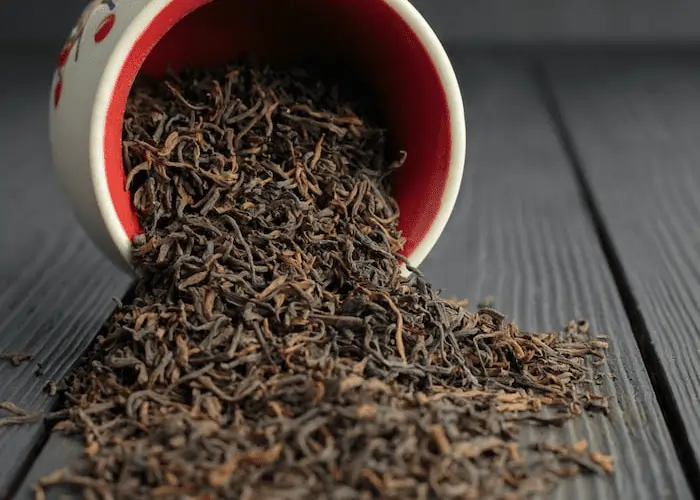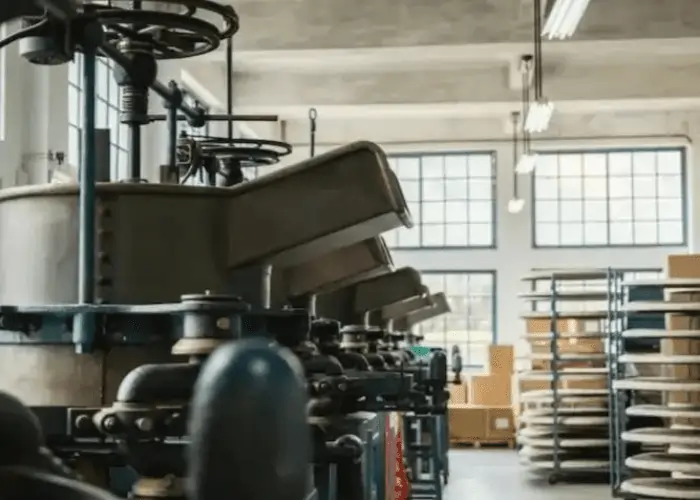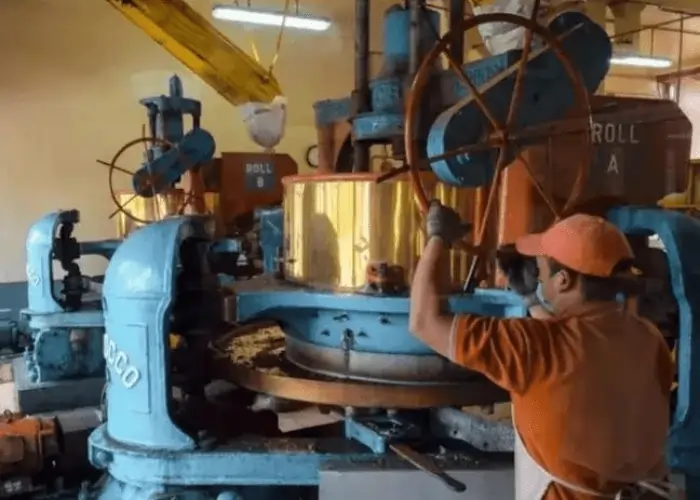Black tea is the most prevalent and most loved tea by millions of people across the world. It is known for its rich, bold flavor and distinctive manufacturing process that sets it apart from other types of tea such as green and oolong.
The main thing that makes black tea different from other tea is fermentation. The process of fermentation that black tea undergoes, gives it a unique flavor profile and provides a host of health benefits.
If we talk about the origin and history of black tea, we need to go back to the Ming Dynasty (1368-1644). It is said that black tea was introduced during the Ming Dynasty. When they forgot to fire the tea by mistake after keeping it withering and drying for a long time. Which developed a different flavor in tea, which people liked very much. And when they investigated this, they came to know that this taste of tea came due to fermentation and thus black tea originated.
Fermentation does not only improve flavor and taste it also helps in extending the shelf life of tea.
There are five steps in black tea manufacturing- withering, crushing/rolling, fermenting, drying, and shorting.

What is black tea?
Black tea is a fully fermented tea. It gets its dark color due to fermentation. Fermentation changes the dark green color into dark brown, develop the flavors, and gives the dark red color to the liquor.CTC and orthodox tea are examples of black tea.
Types of black tea
Black tea is divided into two types on the basis of its manufacturing. People also categorized them according to their grown region.
Let’s know about the different types of black tea-
Manufacturing basis
On manufacturing basis, there are two types of black tea- Orthodox and CTC.
Orthodox black tea has a wiry texture due to the High-pressure rolling, and CTC tea has granular shape due to crushing, tearing and rolling.
Regional basis
Based on regions, we can divide them into Assam tea, Darjeeling tea, Ceylon(Sri Lankan tea), and Kenyan tea.
Assam tea
Assam tea is known for its strong taste and full body cup due to its soil character. The lateritic soil and 2600 mm to 3200mm rainfall annually give it a high-quality yield to produce the best quality black tea.
Darjeeling tea
Darjeeling tea is famous for its sweet muscatel taste due to its higher elevations. Tea grown in higher elevations go through a very dense atmosphere which develops new characters in tea leaves and gives a sweet muscatel taste.
Ceylon tea
Ceylon tea or Srilankan tea has a robust leafy taste and dark color which poses a sweet flavor.
Kenyan tea
Kenyan black tea has a brisk taste and brownish liquor, which goes very well with milk and sugar.
What makes black tea different from other?
If we talk about the manufacturing process of black tea, we ferment the black tea, but green tea is not fermented, and oolong tea is semi-fermented.
Due to the High fermentation, some taste differences are also found in black tea. Compared to other tea, black tea has a robust taste and aroma.
How is black tea made?
The manufacturing process of black tea–

Withering
The manufacturing of black tea Started with withering. It is a moisture removal process and chemical changes also occur during withering.
There are two types of withering -Chemical withering and Physical withering.
What is the Chemical Withering of tea?
In chemical Withering, tea is allowed to release its moisture naturally. In chemical withering machineries aren’t used; it is independent of the role of moisture removal. It is a function of temperature and time.
What is the Physical withering of tea?
In physical withering, tea is withered in troughs with the help of axial flow fans. The tea is spread at 8 inches thick on the withering troughs, and the axial flow fan blows air at normal temperature and withers the fresh tea leaves.
What types of chemical changes take place while withering?
During the time of withering, the complex compounds of tea break down into simpler compounds.
The breakdown of carbohydrates leads to sugar formation; when the sugar reacts with amino acids, it produces the floral flavor in black tea.
During withering, the fatty acids decrease and affect the aroma of black tea, and the breakdown of catechins forms TF and TR.
Withering also increases volatile flavor compounds in black tea.
Rolling/Crushing
After withering, the tea goes for rolling or crushing.
In CTC manufacturing, we crushed the leaves, but in orthodox manufacturing, we rolled the leaves.
CTC method
In CTC manufacturing, the tea goes to the rotorvane machine after withering. Rotervane is a cylindrical shape machine where the tea leaves get torn.
After tearing the tea go to the rollers with the help of a PVC conveyor belt. And pass through the 4set of rollers where the rollers crush the leaves and take out the juices.
Then the tea, goes to the googie/rotary shifter for curling, where the CTC gets its ideal granular shape.
Orthodox method
In orthodox manufacturing, the tea gets rolled instead of crushing. The leaves go to the rolling machine and get rolled until the juices come out.

Fermentation
The third step is fermentation, where the tea ferments and changes its color into dark brown and develops the flavors and aroma.
There are two types of fermentation for tea- floor fermentation and CFM(continuous fermenting machine).
Floor fermentation-
It is a traditional method of fermenting. In floor fermentation, the tea is fermented on the floor in a closed, insulated room. But nowadays, floor fermentation is very rare.
CFM fermentation
It is a fully automated process of fermentation. Where the tea pas through different modules and air changes during the fermentation process.
Why is fermentation necessary?
Fermentation gives an ideal atmosphere to ferment. It activates the enzymes and gives character to the tea.
To activate the enzymes, it is essential to give them an ideal temperature of 30°-36° and 95-98% of relative humidity. Otherwise, the enzymes will not be active and the fermentation will not take place.
Drying
The fourth step is drying. Drying removes the remaining moisture from tea. And make the tea storable for a long time.
There are five types of dryers available-
- Conventional dryer(used for CTC, orthodox and green tea)
- Vibro fluid bed dryer(used for CTC, orthodox and green tea)
- Pan-fried dryer(used for handmade teas)
- Microwave drying(used for handcrafted teas)
- Sun drying(used for handcrafted teas).
But, VFBD is commonly used. The complete form of VFBD is Vibro fluid bed dryer.
How is the tea dry in VFBD?
The fermented tea is spread over the perforated bed through a mechanical feeder and spreader. The tea is fluidized by hot air and pushed into the drying chamber through an aerodynamically designed plenum chamber. Then the mechanical vibrator moves the teas forward and dries the tea uniformly.
Importance of drying –
- Drying stops oxidation.
- Drying enhances flavors and aroma.
- Drying removes the moisture from tea.
- Drying increases the shelf life of tea.
Shorting
shorting is the last step of black tea manufacturing. Where the tea is separated according to their shapes and size and weight.
When the tea comes out from the dryer, it is called bulk tea.

After drying, the tea goes to the machine called Mother Vibro Shorte. This machine accordingly rejects the larger and uneven dry grains and removes the fibers.
Mother Vibro Shorter uses magnetic induction to clean fibers. After cleaning the tea, it goes to the 7deak Vibro screen shorter.
It is a vertical shorting and grading machine; it distinguishes between the grades according to their shape, size, and volume.
Chemical composition of black tea-
The chemical found in tea includes polyphenols, antioxidants, amino acids, vitamins, proteins, carbohydrates, and trace elements. In addition, alkaloids such as caffeine, theobromine, and theophylline are naturally present in tea.
The catechins found in tea are epicatechin, epigallocatechin, epicatechingallate and epigallocatechingallate. Polyphenols found in tea are theaflavins and thearubigins.
Conclusions
Tea is a part of our daily life. But, Have you ever thought? How do the fresh tea leaves turn into your desired black tea? But now you are well aware of each step of black tea manufacturing.
Now you know how the fresh leaves come from the garden and the magic turns them into black tea. Just kidding, preparing a good cup of tea takes a lot of effort and time. I hope you like this post.



